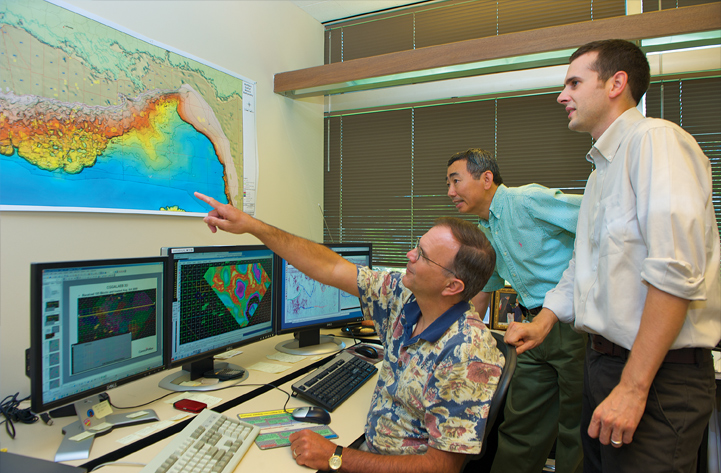All Categories
Featured
Table of Contents
Your Degree In Geophysics in Straffon Oz 2020

Other possible geophysicist majors that aren't geophysics or geoscience consist of: Atmospheric sciences and meteorology Chemical and physical oceanography Earth science Environmental science Hydrology and water resources science Products science By earning any geophysicist degree, and by taking the needed geology courses, you need to certify for an entry-level position as a geoscientist or geophysicist.
Eventually, trainees must discover: a branch of geology that takes a look at the various elements of minerals, consisting of chemical composition, internal crystal structure, and physical residential or commercial properties. the research study of rocks and the procedures and conditions that form and change them over time. There are a few neighborhoods in this branch of geology, consisting of igneous, metamorphic, and sedimentary rocks.

This field examines structural rock features such as cleavage, faults, joints, and small folds. They should also discover the computer skills needed to: analyze information develop digital designs and maps run geoscientists' software application Trainees should likewise benefit from all chances to gain real-world experience. Aspiring geophysicists must anticipate to hang out learning: in the class in the field in labs Certainly, skills taught in the class are very important for aiming geophysicists.
Geophysicists in Forrestfield Aus 2020
For example, geoscientists invest a lot of their time outside when operating in the field, so they should possess "outdoor abilities" like outdoor camping and operating boats, aircraft, and other lorries. Due to the fact that they invest so much time in remote places, it's necessary that geophysicists also have the physical endurance to bring required equipment on their hikes to areas of study.
The job uses: a high median and leading revenues a high rate of personal complete satisfaction among geophysicists low work stress favorable task outlook Additional details on incomes capacity and task outlook is detailed below. For trainees seeking to land an entry-level role as a geoscientist or geophysicist, it takes 4 years, or the time required to finish a bachelor's degree in geophysics or an associated discipline.
Some research positions in geophysics require doctoral degrees. Also, if you prepare to teach at a college or university, you need to make a Ph - Glad You Asked: What Are Seismic Surveys? in WA 2021. D. in geophysics or a related field. The time it takes to make a Ph. D. differs by organization and program, however it normally takes four to 6 years beyond the bachelor's degree.
Geophysicist Careers in Westfield WA 2020
Many employers require candidates to have a bachelor's degree in geophysics or a closely associated discipline for all entry-level positions. And, in some cases, employers need a master's degree. As a result, there's no other way around the degree requirements for becoming a geophysicist. Most companies will expect or require a practicing geologist to be certified for positions beyond those at the entry level.
Currently, 31 states need licensing for geologists, although licensing is not constantly needed, particularly for entry-level work. The states that do issue licenses utilize the Basics of Geology Exam (FGE), which is administered through the National Association of State Boards of Geology (ASBOG). Now that you understand which degree for geophysicist tasks you require, you'll need to land a job, and it's crucial to find out just how much cash you can make in this profession.
According to BLS, the median yearly wage for geoscientists is $93,580. According to BLS, particular markets provide greater salaries for geoscientists, and in some cases, they use higher-than-average revenues.
Geophysical Surveying - Methods And Applications in Woodlands Western Australia 2021
In fact, mining, quarrying, and oil and gas extraction provides over $32,000 more yearly than the average annual wage for this profession. The federal government, too, uses over $10,000 more in incomes than the national average for geoscientists. In addition to industry type, geographical place can considerably affect incomes for this profession.

The top-paying states and their annual mean earnings, according to the BLS, include: Texas $166,720 Oklahoma $149,630 Pennsylvania $120,590 Hawaii $120,130 Colorado $107,260 These five top-paying states use much greater earnings than the average for this profession. In fact, incomes for geoscientists in Texas are over $73,000 greater than the nationwide average.
It needs to come as not a surprise that most of these high-paying locations remain in Texas and Oklahoma, but some are discovered in California, Louisiana, and Colorado. The top 10 highest-paying city areas for geoscientists are: Houston-The Woodlands-Sugar Land, Texas: $188,400 Tulsa, Oklahoma: $186,490 Midland, Texas: $167,040 Odessa, Texas: $147,080 Oklahoma City, Oklahoma: $145,350 Bakersfield, California: $130,080 Urban Honolulu, Hawaii: $124,470 New Orleans-Metairie, Louisiana: $121,030 Washington-Arlington-Alexandria, DC, VA, MD, WV: $120,180 Denver-Aurora-Lakewood, Colorado: $116,910 For some geoscientists and geophysicists, residing in a metro city is not as appealing as residing in a smaller sized neighborhood.
Table of Contents
Latest Posts
What Are Geophysical Surveys & Why Do They Matter in Parkwood WA 2023
Geophysical Methods in Merriwa Western Australia 2021
Geophysicist: Job Description, Duties And Requirements in Western Australia 2022
More
Latest Posts
What Are Geophysical Surveys & Why Do They Matter in Parkwood WA 2023
Geophysical Methods in Merriwa Western Australia 2021
Geophysicist: Job Description, Duties And Requirements in Western Australia 2022